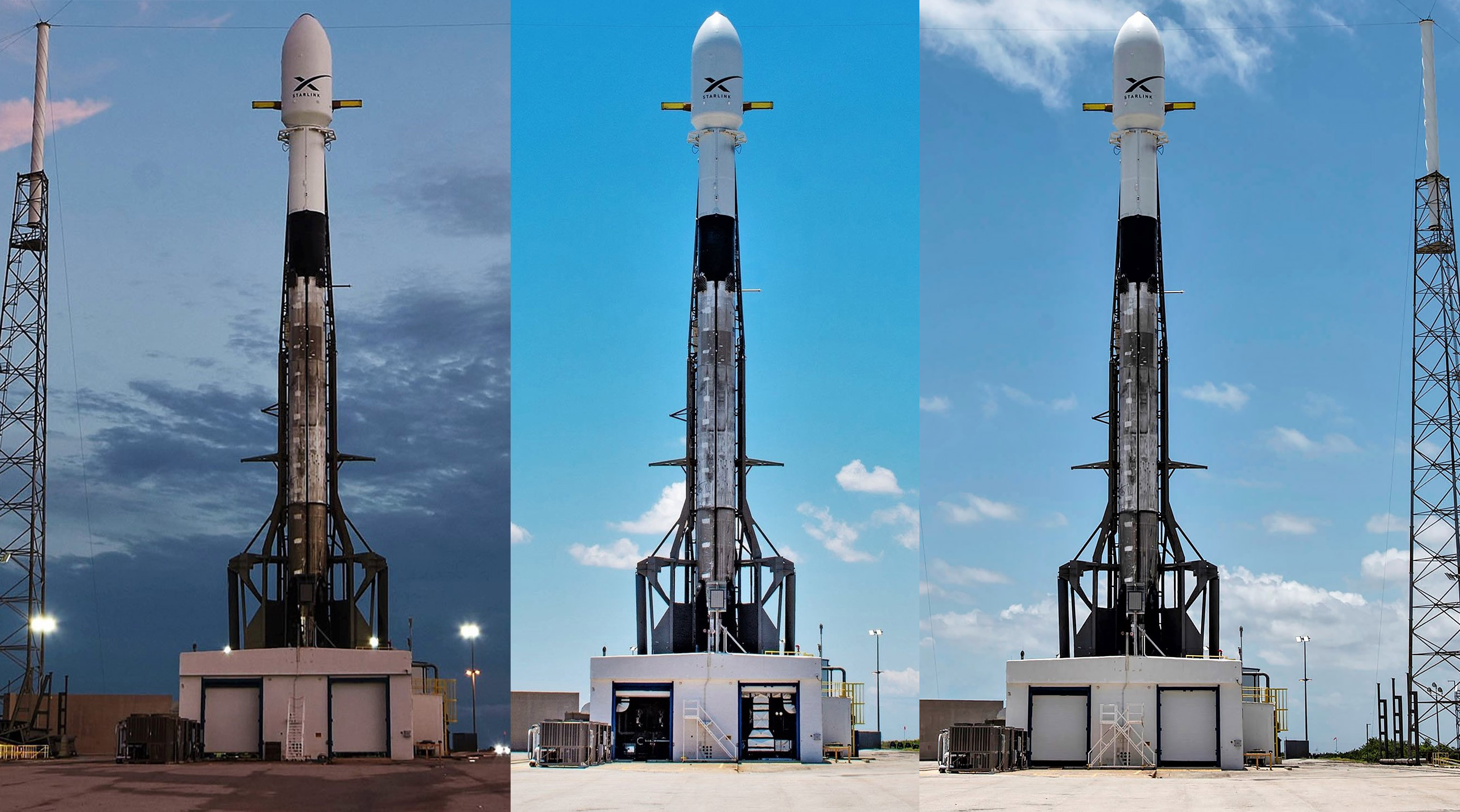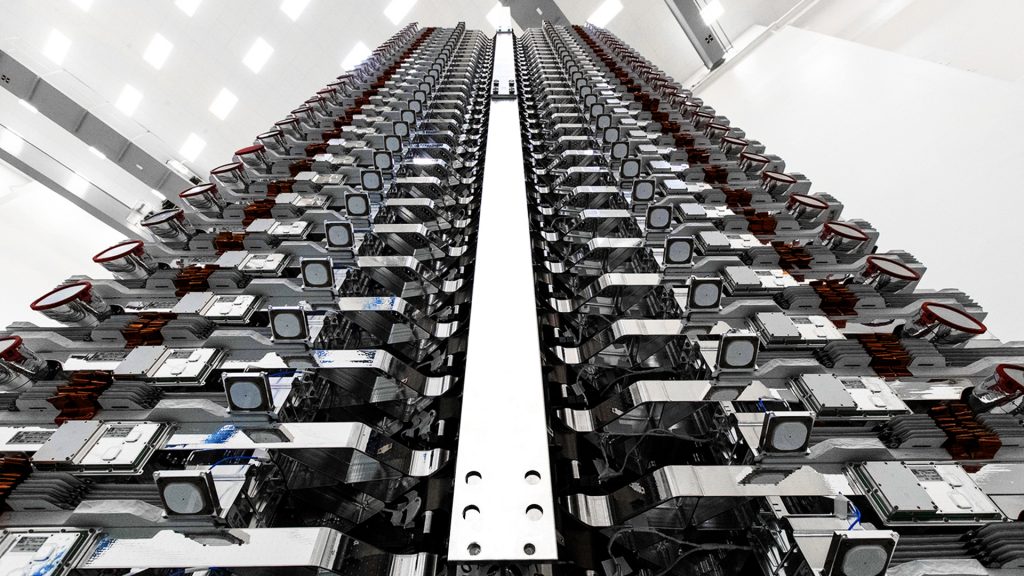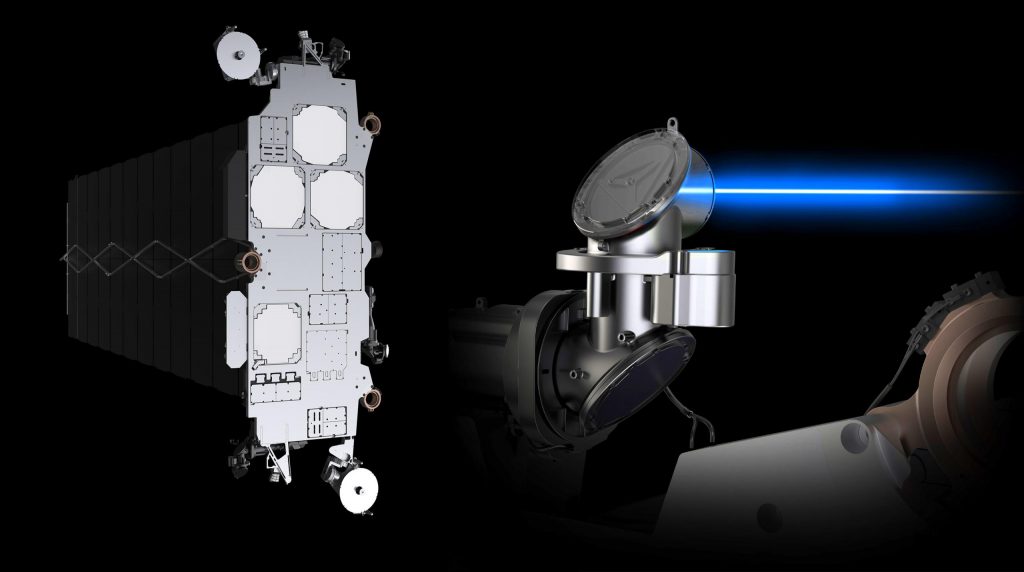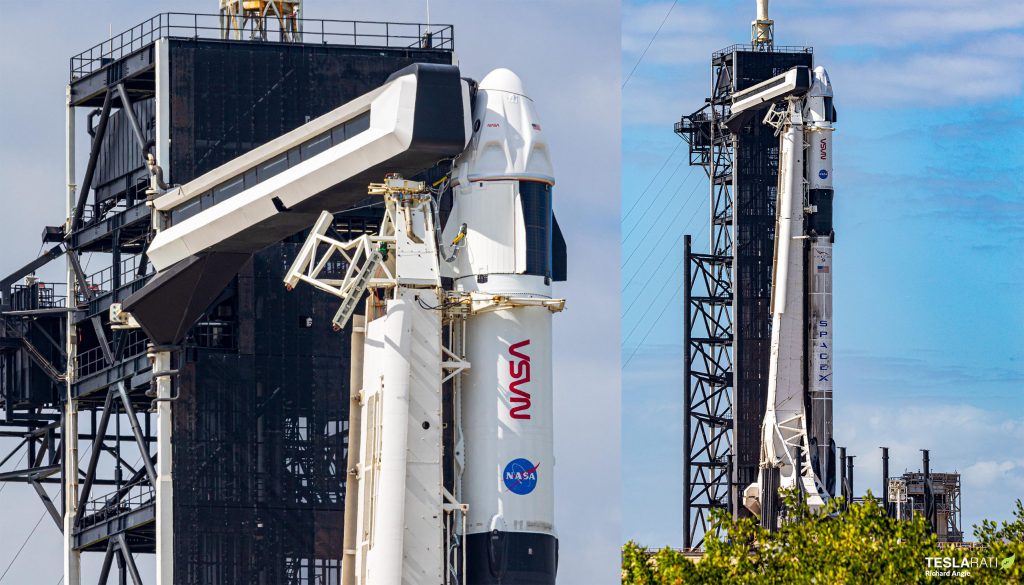SpaceX is preparing for back-to-back crew missions as well as the launch of Starlink.

- Back-to-back launches of astronauts and Starlink satellites by two SpaceX Falcon 9 rockets are still on schedule for later this week.
- Starlink 4-1 is slated to launch on Friday, November 12th at NET 7:40 a.m. EST (12:40 a.m. UTC) using Falcon 9 rocket B1062, a new disposable upper stage, a (possibly) reused fairing, and 53 Starlink V1.5 satellites – the first of their kind to launch from the East Coast.
- Each Starlink V1.5 satellite looks to contain three laser link terminals, one on each side of the satellite. (
- CREW-3Prior to Starlink 4-1, SpaceX is scheduled to launch its fifth astronaut and third operational NASA 'crew rotation' mission on Wednesday, November 10th.

Starlink 4-1 is slated to launch on Friday, November 12th at NET 7:40 a.m. EST (12:40 a.m. UTC) using Falcon 9 rocket B1062, a new disposable upper stage, a (possibly) reused fairing, and 53 Starlink V1.5 satellites – the first of their kind to launch from the East Coast. While the mission profile will be nearly identical to the 29 previous SpaceX dedicated East Coast Starlink launches, the mission will target a slightly lower and different orbit to initiate the second of five constellation'shells'.
Advertisement
When compared to the approximately 1700 Starlink V1.0 satellites that SpaceX has launched over the last two years, the Starlink V1.5 satellites that the company has recently begun launching have had their designs partially upgraded, but are most notable for the addition of several'space lasers,' which are used to direct laser beams into space. Optically interconnected lasers, as they are formally known, will allow Starlink satellites to communicate with one another and route communications entirely in orbit, utilising zero-gravity space to create what amounts to wireless fiber-optic links with bandwidth on the order of tens or hundreds of gigabits per second (Gbps). A significant likelihood exists that SpaceX will eventually replace the first-generation Starlink V1.0 constellation as soon as feasible, leaving behind an improved and laser-linked clone network in its place.
By interconnecting most or all of its constellation with lasers, SpaceX has the potential to simplify Starlink ground station operations while also reducing the amount of bureaucratic work required to licence and construct those stations in virtually every country where the company wants to do business. As a result, SpaceX would have a far simpler time providing aircraft and ships with unprecedentedly high-quality internet service – a captive industry that is almost waiting to be disrupted.

Each Starlink V1.5 satellite looks to contain three laser link terminals, one on each side of the satellite. (SpaceX)
Late on November 9th, SpaceX vice president Bill Gerstenmaier reported that the drone ship Just Read The Instructions (JRTI) – which was originally tasked with assisting Crew-3's rocket landing – had been "beaten up" by the Atlantic, forcing it to swap positions with A Shortfall of Gravitas (ASOG). It is unknown whether the damage sustained by JRTI is sufficient to warrant a return to port, which could result in a week or more of Starlink 4-1 launch delays. However, there are no indications of a delay at the moment.
Advertisement
CREW-3
Prior to Starlink 4-1, SpaceX is scheduled to launch its fifth astronaut and third operational NASA'crew rotation' mission on Wednesday, November 10th. Additionally, Crew-3 will house the 15th through 18th astronauts launched by SpaceX, nominally sending Raja Chari, Thomas Marshburn, Kayla Barron (NASA), and Matthias Maurer (ESA) to the International Space Station for a November 11th docking.

Crew-3's spacecraft, Crew Dragon C210 and Falcon 9 B1067. (Courtesy of Richard Angle)
Advertisement